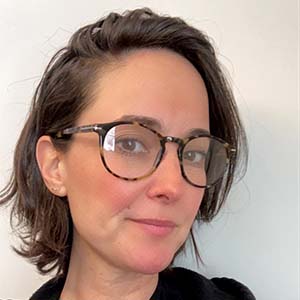Pregnant women are inundated with an immense list of food and drink to avoid for nine long months and yet our personal care products contain hundreds of chemical ingredients that are way more threatening than a piece of unpasteurised cheese. So, in addition to skipping the sashimi you might want to acquaint yourself with — and avoid — these 10 toxic chemicals found in your staple beauty products.

Thinkstock
1 / 10
Acne Medications
An unfortunate side effect of pregnancy in some women is a return to adolescent skin (and we’re not talking about a youthful and wrinkle-free complexion). Acne brought on by pregnancy can motivate you to use acne medication, but resist the urge to use pimple-busting treatments as they can have severe consequences on a developing fetus, such as malformations. Avoid all retinoids and retinols and their derivatives.
Other names: retinyl palmitate, retinyl acetate, retinyl linoleate, retinoic acid, retin-A, tretinoin, bexarotene, alitretinoin.

Getty Images
2 / 10
Parabens
These easily absorbed preservatives are so common in our beauty products and yet they can have negative effects on our pregnancies and unborn children, such as miscarriages and impaired fetal growth. Parabens have also been linked with breast cancer. While pregnant, it’s best to use paraben-free products.
Other Names: Methylparaben, butylparaben, propylparaben, isobutylparaben, ethylparaben.
You might also like: Natural Yet Effective Skincare Recipes You Can Make at Home.
Other Names: Methylparaben, butylparaben, propylparaben, isobutylparaben, ethylparaben.
You might also like: Natural Yet Effective Skincare Recipes You Can Make at Home.

Thinkstock
3 / 10
Fragrance
Many fragrances contain phthalates and other ingredients that beauty brands aren’t required to disclose. Because ingredients in fragrances are mostly unknown you could be exposing your unborn child to toxic chemicals that could interfere or inhibit fetal growth and development. Avoid all synthetic fragrances as well as air fresheners while pregnant. Go fragrance-free or look for essential oil alternatives.
You might also like: 20 Things You Should Throw Out Now for Better Health.
You might also like: 20 Things You Should Throw Out Now for Better Health.

Getty Images
4 / 10
Toluene
In addition to being used in paints, lacquers and adhesives, this solvent is found in most mainstream nail polishes — you’d know it from its distinctive smell. Inhaling high levels of toluene during pregnancy can result in developmental damage to the fetus. Avoid exposure by staying out of nail salons and painting nails outside or in a very well ventilated area. Look for nail polishes that are labelled “three-free” (or even “five-free” or “seven-free”) to avoid the toxic cocktail of dibutyl phthalate, formaldehyde and toluene.
Other Names: methylbenzene, toluol, antisal 1a.
Other Names: methylbenzene, toluol, antisal 1a.

Thinkstock
5 / 10
BHA/BHT
This preservative and masking agent is found in our lipsticks and moisturisers, among many other beauty products. It’s even added to some of our breakfast cereals for freshness. These chemicals are possible human carcinogens, can interefere with hormone function (and you don’t want to be interefering with anything hormone-related while pregnant) and may cause cancer. The use of BHA is unrestricted in Canada even though Health Canada has labeled it a “high human health priority”. Steer clear during pregnancy.
Other names: butylated hydroxyanisole, butylated hydroxytoluene.

Thinkstock
6 / 10
Chemical Sunscreen
Chemical Sunscreens such as oxybenzone and avobenzone can be possible hormone disruptors. More research still needs to be conducted but because the use of chemical sunscreens is a controversial issue for pregnant women it’s better to be safe and use physical sunscreens instead. Look for zinc oxide and titanium dioxide for natural sun protection.
For a natural sunscreen alternative, check out: The Best Natural Products Currently Available in Canada.
For a natural sunscreen alternative, check out: The Best Natural Products Currently Available in Canada.

Getty Images
7 / 10
Phthalates
Phthalates help increase the strength and flexibility of a product, which is why they are often found in nail polish and perfume. Phthalates can cross the placenta, meaning your baby can absorb them directly. These chemicals have been linked to abnormal fetal development and ADHD.
Other names: DBP (dibutyl phthalate), DNOP (di-n-octyl phthalate), DiNP (diisononyl phthalate), DEP (diethyl phthalate), BzBP (benzyl butyl phthalate), DEHP (di 2-ethylhexl phthalate).

Guerlain
8 / 10
DHA
DHA is a colour additive and the main ingredient in sunless tanning products. DHA is apparently safe for use on the skin, however no testing has been done on the inhalation of airborne particles. Some studies have suggested that DHA can cause damage to DNA, so without further info, embrace your porcelain skin until after your baby is born.
Other names: dihydroxyacetone, glycerone.

Pexels
9 / 10
Formaldehyde
Formaldehyde is found in tons of nail polishes, as well as certain hair-straightening procedures. This chemical is not only associated with cancer but it can increase fertility issues and the risk of miscarriage, so it’s best to avoid it while trying to conceive. Gel manicures are especially high in formaldehyde, as is the semi-permanent Brazillian Blowout hair treatment, so scrap those completely while pregnant and avoid other formaldehyde-containing products until you’ve finished breastfeeding.
Other names: formalin,
formic aldehyde,
methanediol,
methanal,
methyl aldehyde,
methylene glycol,
methylene oxide.

Thinkstock
10 / 10
Hydroquinone
Skin pigmentation and discolouration, like melasma or pregnancy mask, is a real thing for many during pregnancy, and some women may be tempted to turn to skin lightening agents for help. Products that lighten and brighten your complexion usually contain hydroquinone and experts are concerned with its very high absorption rate. In fact, hydroquinone is banned in beauty products in Europe. The risk of cellular toxicity is too great, so avoid it altogether until you are finished breastfeeding.
Other names: benzene-1,4-diol, quinol.
You might also like: 10 Important Skin Care Tips to Follow During Pregnancy.
Other names: benzene-1,4-diol, quinol.
You might also like: 10 Important Skin Care Tips to Follow During Pregnancy.
ADVERTISEMENT
ADVERTISEMENT
ADVERTISEMENT


